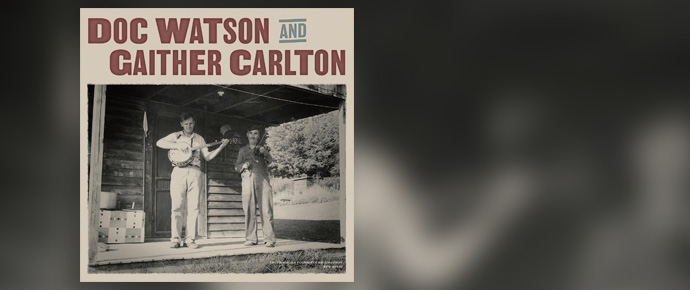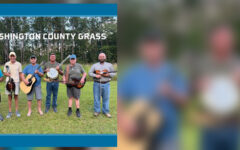
Credit the esteemed Smithsonian Folkways record label for presenting, for the very first time, a series of historic recordings culled from performances by Doc Watson with his father-in-law Gaither Carlton in New York City’s Greenwich Village. It was one of the first places the pair appeared outside their native North Carolina, and in 1962, the year these shows were taped, traditional Appalachian music was practically unheard of outside its native environs. Indeed, it’s likely that most people who were in the audience for these two concerts had never experienced these sounds before, and in fact, may have viewed it merely as an archival remnant of a time and place far removed from contemporary culture. For them, it may have simply been a quaint and curious sound, one that reinforced stereotypes associated with hicks and hillbillies, barefoot and in britches, and all strangely alien to their own era.
Of course, Doc would late go on to become a musical icon, revered by those who not only had a fondness for bluegrass, but who also had an appreciation for essential American music. Discovered nearly by accident by folk archivist and historian Ralph Rinzler, Watson was encouraged to introduce his music to a larger segment of the American populace, and it was for that reason that he accepted an invitation to headline in the Big Apple and bring the sounds of his native South to the larger realms of that American metropolis.
Even by modern standards, these recordings sound remarkably vital, and though essential folk songs such as Handsome Molly, Corrina, Billy in the Low Ground, and Bonaparte’s Retreat are hewed from age-old tradition, they ring with both authenticity and accessibility. Watson’s vocals on He’s Coming to Us Dead, My Home’s Across the Blue Ridge Mountains, The Blue Ridge Mountain Blues, and Groundhog convey an easy assurance, sincerity, and affability that allow for a concise connection on both sides of the cultural divide. Part of the reason not only has to do with the playing, all tightly intertwined, but also the unpretentious manner in which it’s presented. This is a sound that portrays solace and sentiment in equal measure, all grounded in ideals intrinsic to the heritage passed down from one generation to another, beginning with the first settlers that alighted on these shores. Even the instrumentals — Willie Moore, Brown’s Dream, Billy in the Low Ground, et. al. — share that sympathetic stance.
As with any Smithsonian Folkways package, the photos and liner notes that accompany the release enrich the effort by providing invaluable insights. Consider this an essential offering for anyone whose love of bluegrass and American music in general embraces its early origins.







